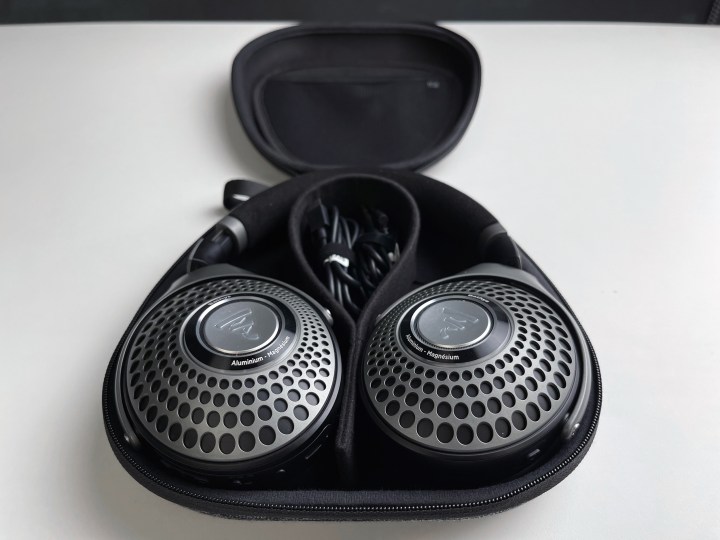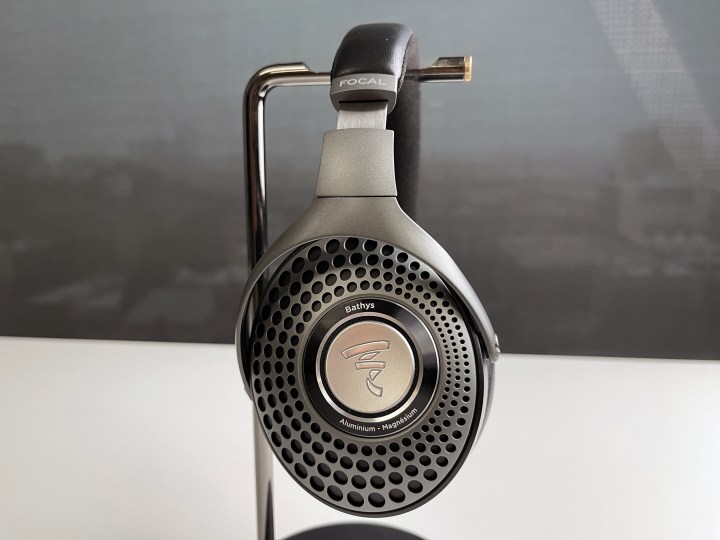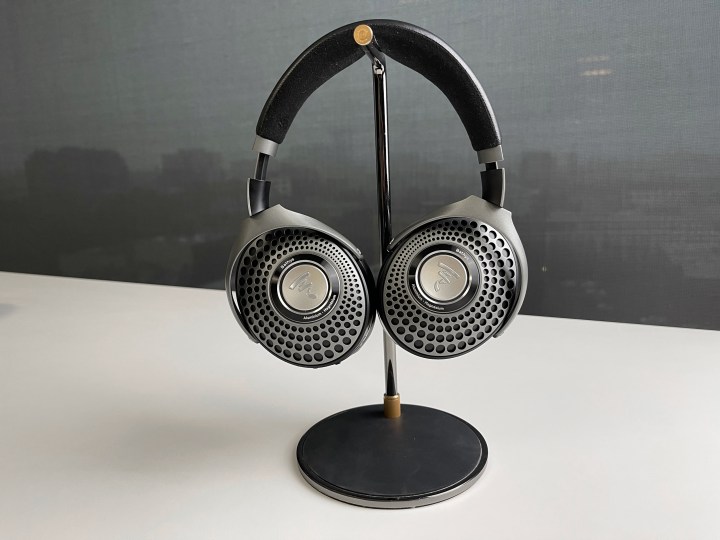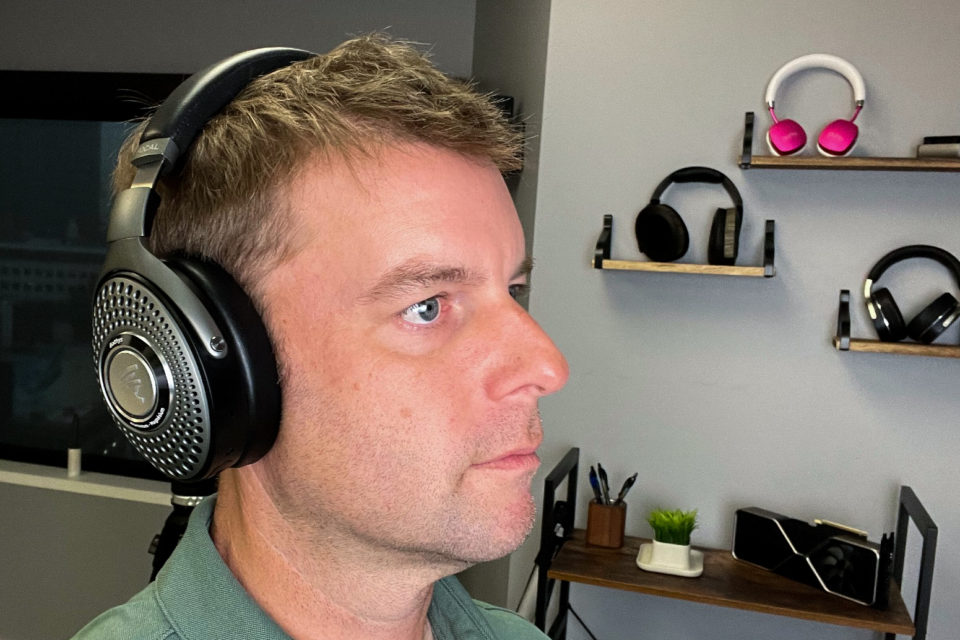Focal Bathys headphones review: Transcendent wireless cans
MSRP $800.00
“The Bathys from Focal are the best-sounding wireless headphones I’ve heard yet.”
pros
-
Exceptionally open sound
-
Highly detailed
-
USB DAC
-
Solid battery/fast charging
-
Bluetooth multipoint
cons
-
Fairly heavy for long wear
-
Moderately effective ANC
Audiophile wireless headphones. Some (mostly audiophiles) would say that’s an oxymoron. That’s because Bluetooth is, by nature, a very narrow pipe that was never designed to carry the large amounts of data that CD-quality sound requires. That has forced the entire wireless headphone industry to heavily compress the audio it sends over Bluetooth, and if you start with a compromised signal, then everything else down the chain will also be compromised in some way. Garbage in, garbage out, right?
Well, sure, there’s some truth to that. There’s no effective way to fake your way up to CD-quality from a lossy, bit-starved Bluetooth audio stream. But that doesn’t mean that Bluetooth can’t sound better than it often does. That’s the premise behind the Focal Bathys headphonesthe French audio outfit’s first take at a wireless noise-canceling headphone.
(Editor’s note: For my audio geek friends out there, let me quickly acknowledge that I’m aware of the existence of aptX Lossless. I’m also aware that very few source devices support it right now. )
Focal’s position is that, through the meticulous design and engineering of every component, and by carefully balancing active noise canceling (ANC) and digital signal processing (DSP), it is possible to maximize the potential of Bluetooth audio. In a conversation with Focal, I was told the company’s aim was to develop wireless headphones that sounded as close to the company’s vaunted Celestee headphones as possible. I don’t know how close Focal got to the Celestee (which I loved), but I will say I’m pretty thrilled with how the Bathys sound.
 Caleb Denison/Digital Trends
Caleb Denison/Digital Trends
When it comes to speaker and headphone design, trade-offs and compromise are bound to be involved, and so it is with the Bathys. They will by no means be all things for all people — a goal which the Sony WH-1000XM5 strive to meet — but that is by design. More on that in a moment. Let’s talk about what you get when you spend $800 on the Focal Bathys, and whether they’re worth the investment.
what you get
At $800, everything about the Focal Bathys should feel premium — and so it is. The carrying case is covered in a soft textile reminiscent of cashmere, and real leather is used on the headband and earcup padding; Hell, even the included headphone and USB cables feel premium. There’s no carabiner included, but there is a seriously stout ribbon loop made for clipping the carrying case to a backpack. You’ve got enough carabiner kicking around anyway, don’t you?
In a sea of recognizable Sony and Bose cans, the Bathys stand out
You’ll also get just over 30 hours of battery life with ANC turned on, and a whopping 5 hours of life out of 15 minutes of quick charging. The Bathys support SBC, AAC, Apt-X and Apt-X Adaptive, and a built-in DAC (more details below) delivers up to 24 bit/192kHz resolution.
Nearly as I can tell, though, the Bathys do not have built-in wear sensors, as they do not pause music playback when removed from the head.
How they look
The Focal Bathys have a distinctive, premium look. When I wore them on a recent flight, I caught a few fellow passengers eyeballing the headphones as I wore them. The dimpled finish on the earcup exterior calls welcome attention to the headphones, while the optionally illuminated Focal “fire” logo glows a cool white when the headphones are powered on. In a sea of recognizable Sony and Bose cans, the Bathys stand out in a classy, sophisticated way.
How they feel
No getting around it: The Bathys are a bit heavy, especially when weighed against the Sony WH-1000XM5 other Bose QC45. Then again, so are the Bang & Olufsen H95 and Master & Dynamic MW75. The added weight is likely a byproduct of the premium materials in use, so in a way, I find it desirable as I hold the Bathys in my hand. But when I put them on my head, I immediately wish they were a bit lighter. By no means are the Bathys uncomfortable for shorter-term wear, but I did notice the weight bearing down on my crown about three hours into my recent flight. The weight is somewhat offset by carefully considering the clamping force that I enjoy, but I have to stop short of saying these are a traveler’s delight. I was fine wearing them for two to three hours, but not five or six at a time. Of course, your mileage may vary.
How they work
The Bathys manage to be highly capable without being complicated. If all you want is to turn the headphones on, connect via Bluetooth, and start listening, they’ll do that. If you want to toggle between ANC and transparency mode, there’s a button for that, too.
If you prefer a wired connection, you can go that route with a typical 1/8-inch headphone cable, but the Bathys also offer a direct digital audio connection via USB-C for even better sound quality. While iPhone owners will need to purchase a Lightning-to-USB-C adapter, Android owners can just plug the Bathys directly into their phone. In any case, whether using a mobile device or a PC, this direct digital connection allows the Bathys to use its own top-tier DAC, rather than whatever DAC is built into your device. This was a smart move, as the DAC built into most phones, laptops, and desktop PCs is usually a very weak link in the audio chain.
 Caleb Denison/Digital Trends
Caleb Denison/Digital Trends
Wired or wireless, the built-in DAC is just the beginning of what makes the Bathys different from other headphones. Focal designs and builds its own drivers for the Bathys, just as it does for its other headphone models and its renowned loudspeaker lineup. The company claims it has also implemented a powerful headphone amplifier to drive those transducers. These measures on their own should help contribute to excellent sound quality, but Focal claims the tough decisions it made around ANC implementation and the choice to avoid heavy-handed DSP are key to how the Bathys are able to sound better than their competition.
In a conversation with Focal, I was told that the company spent countless hours finding the right balance between ANC effectiveness and sound quality. The more heavy-handed it was with the noise canceling, the more the audio fidelity suffered. When it went too hard in the other direction, though, the ANC wasn’t effective enough to call it a product feature. In the end, focal strove for the sweet spot, where noise-canceling was made just effective enough to keep ambient noise from dirtying the sound, but not so much that it crushed the headphones’ natural tendency toward premium audio quality.
How they sound
Since appreciation for sound quality is highly subjective, I’ll stop short of saying that the Bathys are the best-sounding wireless headphones I’ve ever tested. But I have no qualms with saying that they are, by far, my personal favorites.
I do think it is important to be clear on the point that the Bathys’ noise-canceling prowess is nowhere close to the level offered by headphones like the Sony WH-1000XM5, Bose QC45 or Sennheiser Momentum Wireless 4. As I’ve just explained, that’s by design. The Bathys’ ANC isn’t designed to create a dome of silence around the listener, so they aren’t the best choice for traveling on an airplane or noisy train, but it is effective enough to allow the headphones’ excellent fidelity to shine through . Given this was Focal’s goal, I’d have to say that it was wildly successful.
The Bathys are deeply satisfying and extremely fun to listen to.
As I bounced between the Bathys, the Sony XM5, and the Bowers and Wilkins PX7, all in wireless mode, I was struck by how much more open, airy, and spacious the Bathys sounded. By comparison, the Sony and B&W sounded closed in, almost claustrophobic, which is curious because I’ve never described either as sounding that way in the past. It took hearing the Bathys to reveal how much I’d been missing after years of listening to wireless headphones with forceful ANC and heavy-handed DSP.
The Bathys also sound expertly balanced, with just a bit of added warmth in the bass, a completely transparent midrange, and some of the most articulate, accurate treble I’ve heard from a set of wireless headphones. Honestly, it was hard to believe I was via listening Bluetooth. But then I switched to the wired digital connection using the Bathys’ onboard DAC, and I realized just how much better the Bathys could sound, given a higher-quality signal.
While treble by no means sounded raspy or garbled in the way it does when listening to a low-quality mp3 file, I heard an immediate improvement to high-frequency fidelity once I switched from wireless to digital wired connection. In the wireless mode, Vinnie Colaiuta’s hi-hat and percussion work in the opening seconds of Sting’s Seven Days held together nicely, with a pleasant presence of shimmer and attack not easily audible on other wireless headphones. When I switched to the wired mode, however, I could hear more tone in the cymbals, and the transient response of the drumstick hitting the drummer’s hi-hat had a more pronounced impact. The typically barely audible buzz from the nylon-stringed acoustic guitar also presented more texture. In short, moving from wireless to wired, the sound escalated from great to excellent.
What I love most about how the Bathys sound, though, is how they resolve complex brass overtones and the organic grit of reed instruments like saxophone and clarinet. These wind instruments just sound more realistic and present, which makes for extremely engaging listening sessions when enjoying bands like Earth, Wind, and Fire, Corey and the Wongnotes, and Snarky Puppy.
 Caleb Denison/Digital Trends
Caleb Denison/Digital Trends
I also need to call out how dazzling the Bathys’ stereo separation and soundstage can be. Any track with a guitar playing through a chorus pedal sounds like liquid gold, and the opening chords from the Fender Rhodes on Phat Phunktion’s Integrity damn near made me dizzy. I’m here to tell you: The Bathys are deeply satisfying and extremely fun to listen to, wired or wireless.
I don’t mean to shortchange the Bathys’ bass performance — they have excellent bass response, deep and tuneful, but not overbearing — it’s just that the clarity, detail, and overall integrity tend to steal the show here.
If there’s any drawback to the Bathys’ performance, it’s that they very clearly call out any deficiency in your streaming audio files. While the Bathys do wonders for wireless sound, they can’t fix how crappy, low-quality mp3s sound. So, if you’re not paying for Spotify Premium (which is still only 320kbit/s, but way better than the max 160kbit/s from the free version), then prepare to pony up for the subscription, switch streaming services, or just don’t bother with the Bathys. Fortunately, Apple Music’s Lossless streaming sounded just fine, as did high-fidelity streams from Tidal and Quobuz.
Who should buy them
I struggled to answer this question for a while. I think I’ve covered that these aren’t meant for business travelers — the ANC isn’t strong enough, plus call quality and transparency mode are just OK.
I also think that, at $800, the Bathys aren’t for more casual listeners. These headphones are for audio enthusiasts. But what kind of audio enthusiast is craving wireless headphones? I suspect there are more in this camp than some may suspect.
I believe there is a band of audio enthusiasts out there who, out of peer pressure, may poo-poo wirelessly listening and music streaming in public forums, but secretly crave modern convenience and versatility just like everyone else. And for those folks, the Bathys are one of the hottest tickets in town.
Editors’ Recommendations
